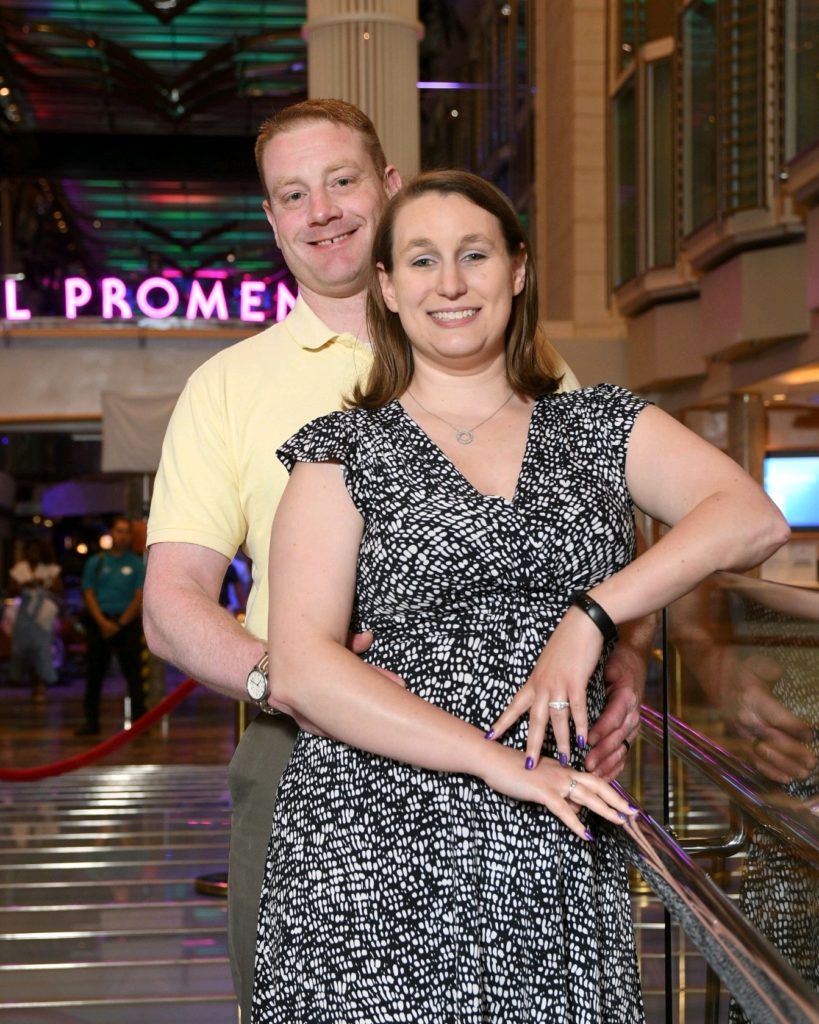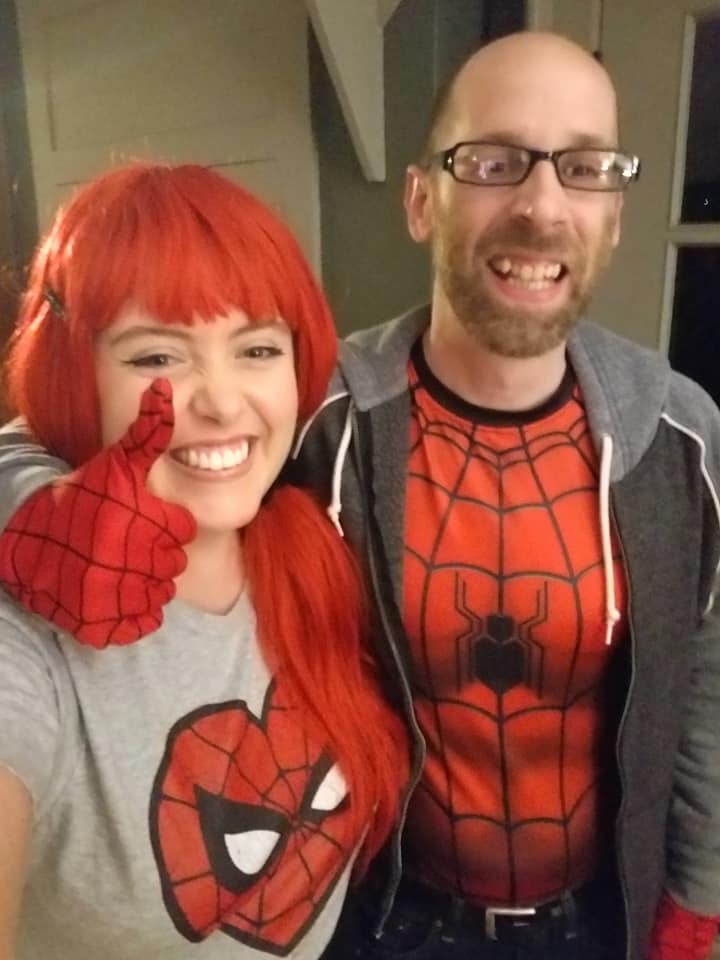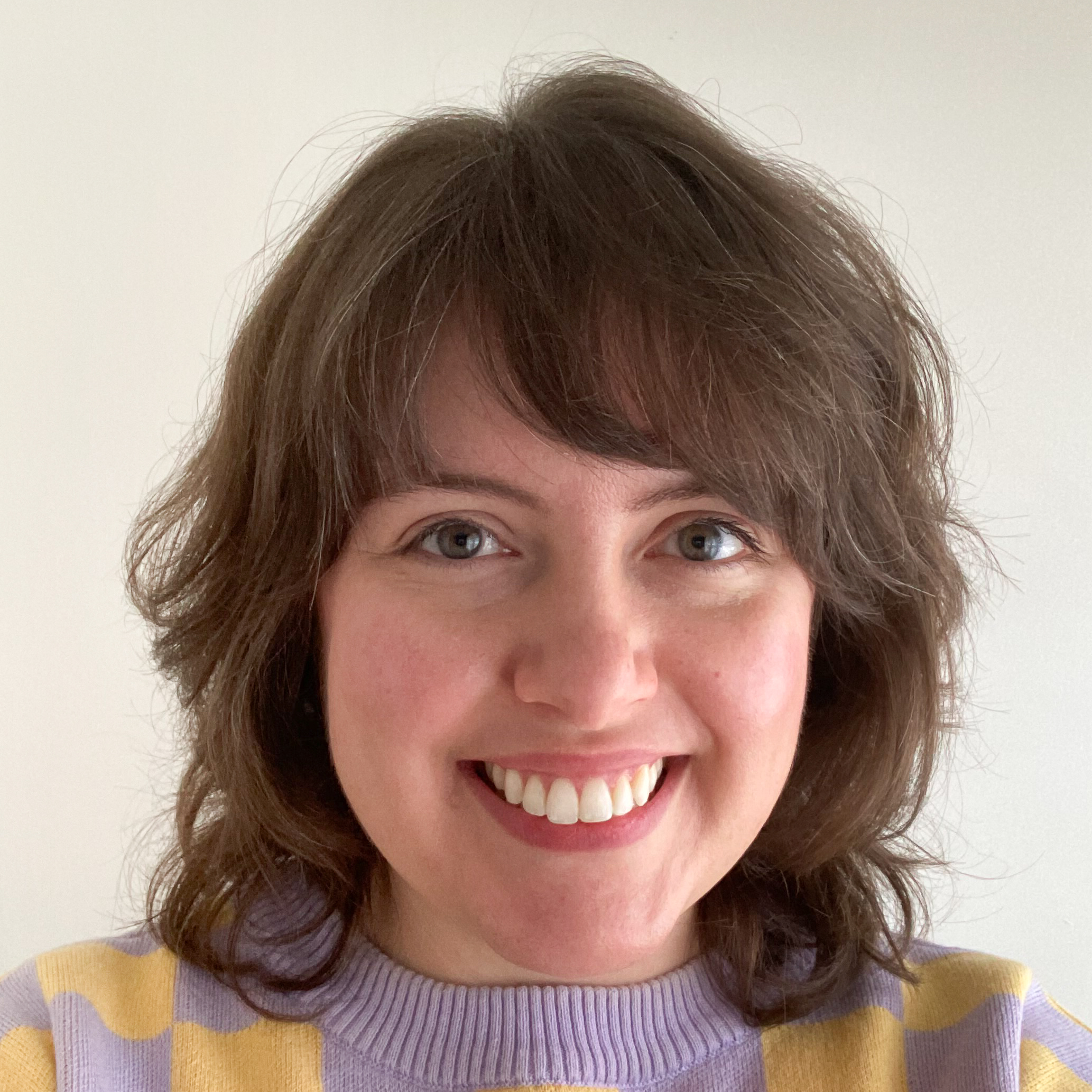Get to know Christina Turner and Dan Minder, who joined the Board of UX Akron this Spring.

Dan Minder
Dan Minder is an IT and education professional who brings UX principles into his work. He received his M.S. in Information Architecture & Knowledge Management from KSU. Outside of work, Dan enjoys backpacking, and is involved with Toastmasters.

Tell me about how you got involved with Toastmasters. Do you enjoy public speaking, or were you terrified? Has your feeling changed from participating?
I very much enjoy public speaking. I attended a few meetings at the club where I work, and I saw the value. Through practice, Toastmasters has helped me polish a wide variety of speeches, like technical presentations and storytelling. The club also helped me practice speaking off the cuff, which has helped immensely in work meetings.
What got you started backpacking? What are some of your favorite trails? Do you have any funny or surprising stories from a trip you’d be willing to share?
I became interested after watching Wild, a 2014 movie starring Reese Witherspoon, where the protagonist hikes the Pacific Crest Trail from the Mexican border all the way to Northern Oregon. I became so enthralled with the idea of long-distance hiking, that I read the book on which the movie is based (once I start reading about something that interests me, it’s already become an obsession). Then I started reading backpacking books and blogs, taking classes, and watching YouTube videos from the trail. I started amassing my own gear collection and then took the plunge on a trail in Western PA.
My favorite hike, so far, is Isle Royale National Park, Michigan. It’s an island in Lake Superior, close to Canada. It’s one of the least visited national parks in the country since it’s only accessible by boat or plane. The park rangers pick you up in Michigan, ferry you to the park, drop you off, and you’re on your own from there. There are plenty of moose and a few wolves. It’s very primitive, biodiverse at different elevations, and absolutely spectacular.
What makes you passionate about UX? How do you work UX ideas and philosophy into your work/day-to-day tasks?
I got my first taste of UX as an undergrad while taking a class titled Cultural Implications of Technology. One of my favorite readings was an article that discussed the need for user-centered design. Another reading discussed the Three Mile Island nuclear accident, and how poor control design contributed to it. These lessons stuck with me.
I witnessed this first-hand at my first real job working in K-12 schools as a support technician. Every day, I saw people struggle with tech – apps and smart boards, for example – that were supposed to make their jobs easier. I also noticed that teachers and administrators tended to berate themselves for not “getting it”. In many cases, I found that the users weren’t necessarily technically inept, but that the technology didn’t work the way they expected it to, that training or guides weren’t made apparent to them, or that things weren’t presented in a way that they could easily understand. Many were intimidated by technology too (“I’m afraid I’m going to make this computer blow up!”).
In my current role, I work more on the customer experience side of things. Here, my knowledge of user research has come in handy. When examining complaints, I find it helpful to observe the users in their work environment as they’re completing troublesome tasks. From there, I try to find workable solutions that meet their needs.
Do you have a UX lesson you had to learn the hard way? Or some experience that made you realize the value of something you learned about in school?
My instructors reinforced the importance of treating the user with respect. Over the years, I have seen too many instances of colleagues holding end users in contempt, or regarding them as an inconvenience. I think it’s important to remember that, as professionals, we exist to serve people through technology, and not the technology itself. That idea keeps me grounded. When someone reports a tech issue to me, and then can’t reproduce the error when I’m present, just sincerely saying “I believe you” goes a long way toward building a solid relationship. Sometimes it drives the folks I work with crazy, but I have always been one to side with the user.
Christina Turner
Christina Turner is an artist and designer working toward her M.S. in User Experience Design at KSU. Currently, she’s developing an information portal that connects people to relevant regional information resources. She’s worked extensively as support staff in public libraries, co-owned FORUM artspace, sat on the Board of SPACES in Cleveland, wrote for various local art publications, and currently co-hosts The Richfield Branch Library Podcast.

Tell us about the library! What’s it like to work there?
The library is an incredible place for idea-loving people. Being able to dive deep into new topics and to learn about so many different subjects alongside patrons when they come in looking for research help is my favorite part of the work. The library is also exceptionally old-school; we’re living in the Information Age, but libraries are not new and actively avoid trends. Working there for nearly 20 years has given me a unique sense of the scale of time. I think it’s encouraged thoughtfulness and looking past the hype to see the (much, much) bigger picture.
It’s also an analog internet, where you can physically rearrange information and observe people existing inside your information structures. I think libraries need some serious UX. I’m excited to see what the future holds for libraries.
What drew you to UX work? How do you incorporate UX principles into your work?
My undergraduate degree is in Printmaking, which is basically graphic design minus computers. I remember being frustrated sometimes at the way the art world sort of shirks the responsibility of making anything functional or useful. I want to make things that look appealing and make people feel certain ways, but also function in some way or help people accomplish something. So I started researching Industrial Design, and then came across Human-Computer Interaction programs, like the one at Carnegie Mellon. So I’ve been keeping an eye on dialog in that space for years.
I didn’t really piece together how well suited I would be to this work until the pandemic. Stepping back and saying “What do I enjoy doing? What do I want to do more of?” made me realize how much I’m interested in the fusion of visual design and information organization that happens in Web Design, and I think my work at the public library helping people navigate pages that really don’t seem designed for them is what led me to value coming at web design from the user’s perspective.
I’ve kept various blogs and created websites for myself, my projects, and projects my friends were working on since junior high. I never really thought that was something unique about me or worth pursuing professionally, because it was never about the website, it was always about getting the message out. So in many ways, I’ve been accomplishing components of a UX practice without the language for it. Getting some language that other people understand and respond to has been invaluable to me and my work.
How is this degree changing your perspective on tech and modern life?
Computers are so rigid. It’s fascinating that humans made them, maybe it’s aspirational: we long to be precise and unchanging, because fundamentally we’re not. At all.
At the library, tech help is a huge component of what I do all day. We’re the community’s IT Help Desk. And a large part of helping people use computers is reassuring them that it’s not unreasonable to be frustrated at these rigid little boxes that insist things are a way they’re not.
In my personal life, I’m seeing interface design now as its components: when something’s off, I have a better sense of what’s off about it (this menu should be over here, those categories are labeled wrong, this is too busy, I don’t know what I’m supposed to look at, etc.) It’s like tasting food after you’ve learned to cook, or going to the museum after you’ve hung a dozen art shows. I’m encouraged to see things I would improve about almost every interface I encounter; there’s plenty of work to be done!
How did you get involved with UX Akron? What do you love about this group?
Another Board member, Jen Stencel, encouraged me to come to a mixer when I was first starting my degree, and I’m so glad I did! It’s such an encouraging group, I left feeling so energized and relieved that I finally found “my people.” No matter where you’re at in your career, don’t be afraid to come meet us!
